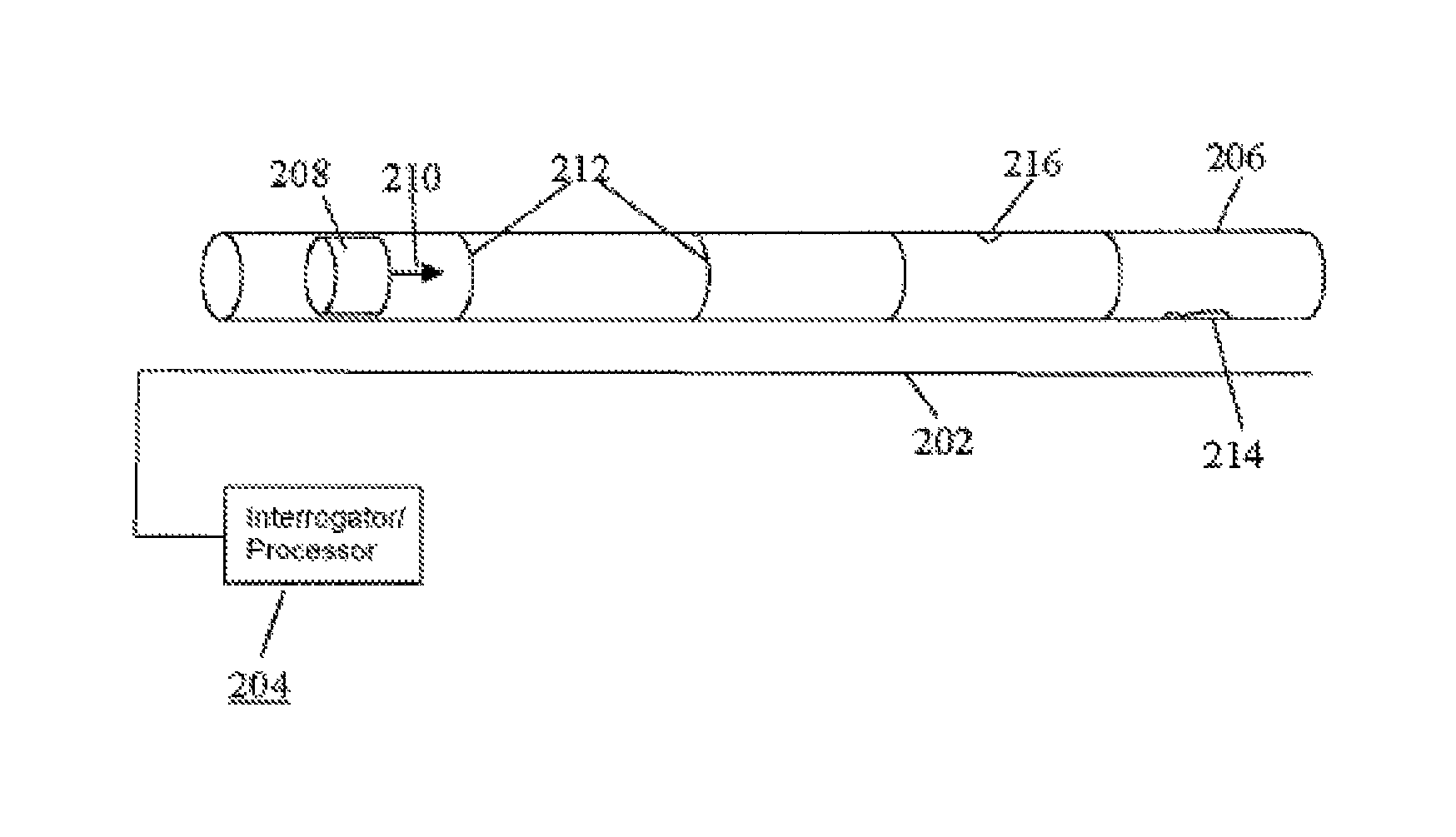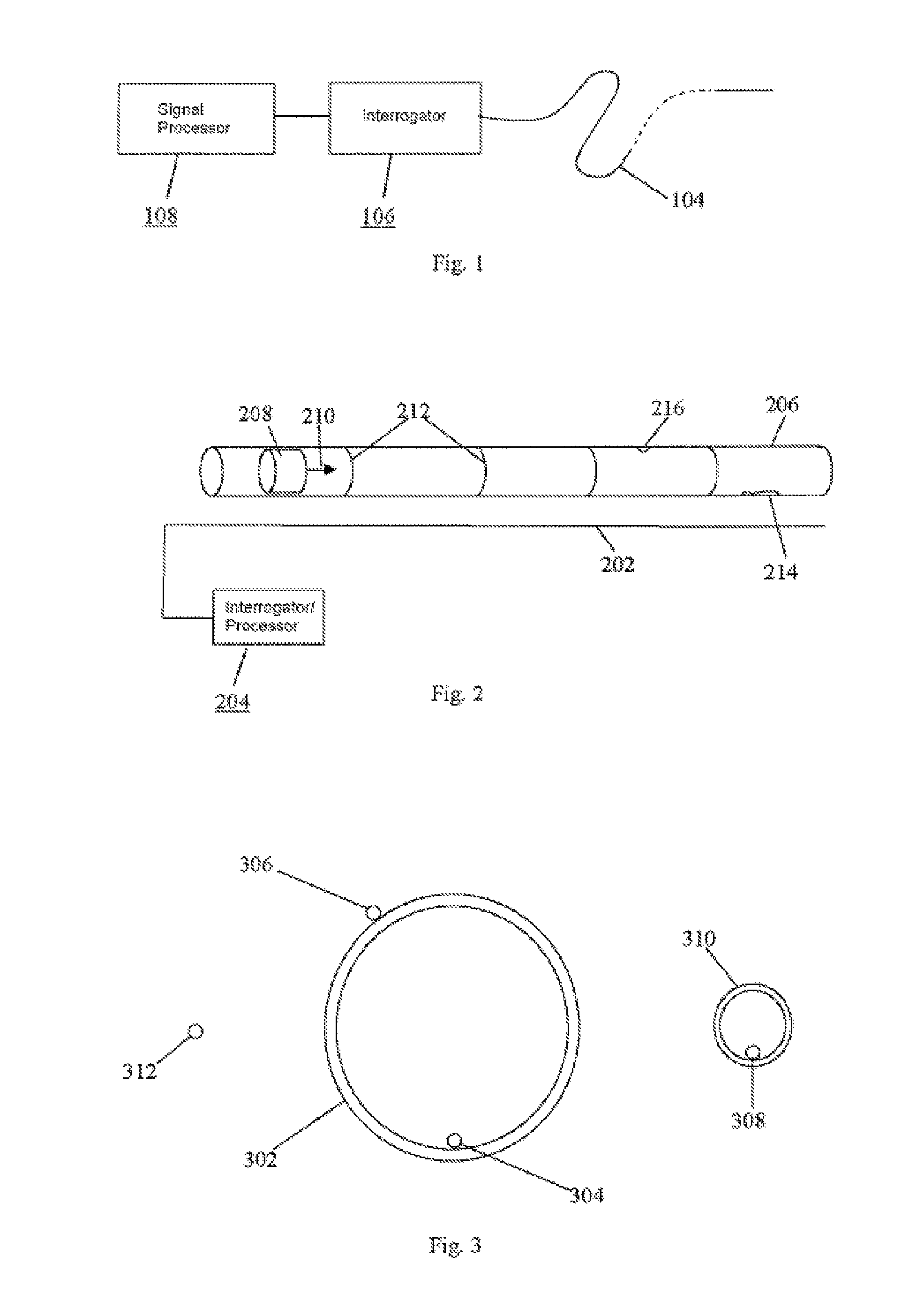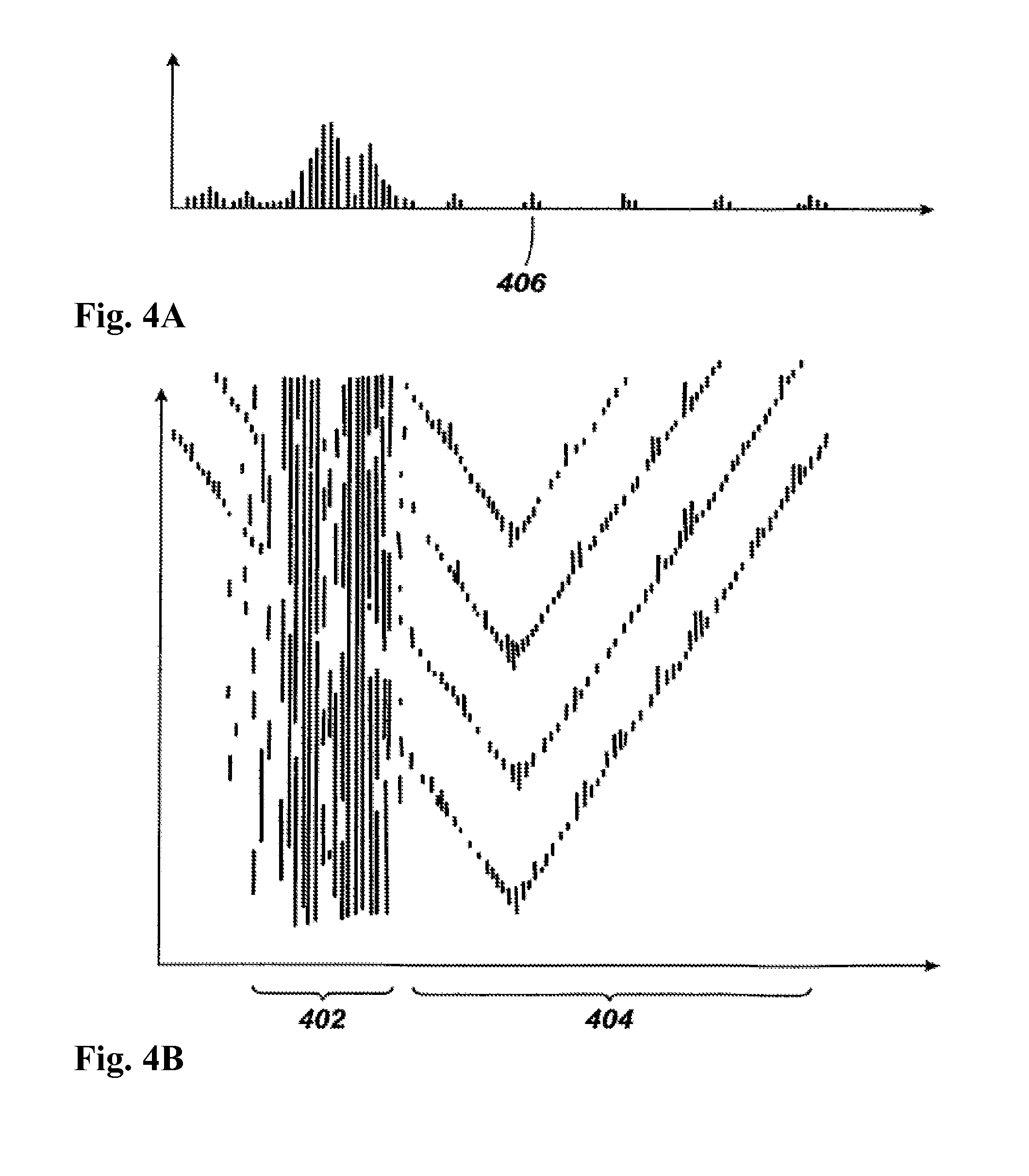Tracking objects in conduits
a technology of conduits and objects, applied in the direction of instruments, specific gravity measurement, wave/particle radiation conversion of sensor output, etc., can solve the problems of difficult effective and efficient monitoring, huge economic loss, environmental impact and potentially catastrophic physical damage,
- Summary
- Abstract
- Description
- Claims
- Application Information
AI Technical Summary
Benefits of technology
Problems solved by technology
Method used
Image
Examples
Embodiment Construction
[0062]FIG. 1 shows a schematic of a distributed fibre optic sensing arrangement. A length of sensing fibre 104, which may be standard optic fibre such as used in telecommunication applications, is connected at one end to an interrogator 106. The output from interrogator 106 is passed to a signal processor 108 and optionally a user interface, which in practice may be realised by an appropriately specified PC. The sensing fibre can be many kilometres in length, and in this example is approximately 40 km long.
[0063]The interrogator launches an interrogating optical signal, which may for example comprise a series of pulses having a selected frequency pattern, into the sensing fibre. The phenomenon of Rayleigh backscattering results in some fraction of the light input into the fibre being reflected back to the interrogator, where it is detected to provide an output signal which is representative of acoustic disturbances in the vicinity of the fibre. The form of the optical input and the ...
PUM
 Login to View More
Login to View More Abstract
Description
Claims
Application Information
 Login to View More
Login to View More - R&D
- Intellectual Property
- Life Sciences
- Materials
- Tech Scout
- Unparalleled Data Quality
- Higher Quality Content
- 60% Fewer Hallucinations
Browse by: Latest US Patents, China's latest patents, Technical Efficacy Thesaurus, Application Domain, Technology Topic, Popular Technical Reports.
© 2025 PatSnap. All rights reserved.Legal|Privacy policy|Modern Slavery Act Transparency Statement|Sitemap|About US| Contact US: help@patsnap.com



